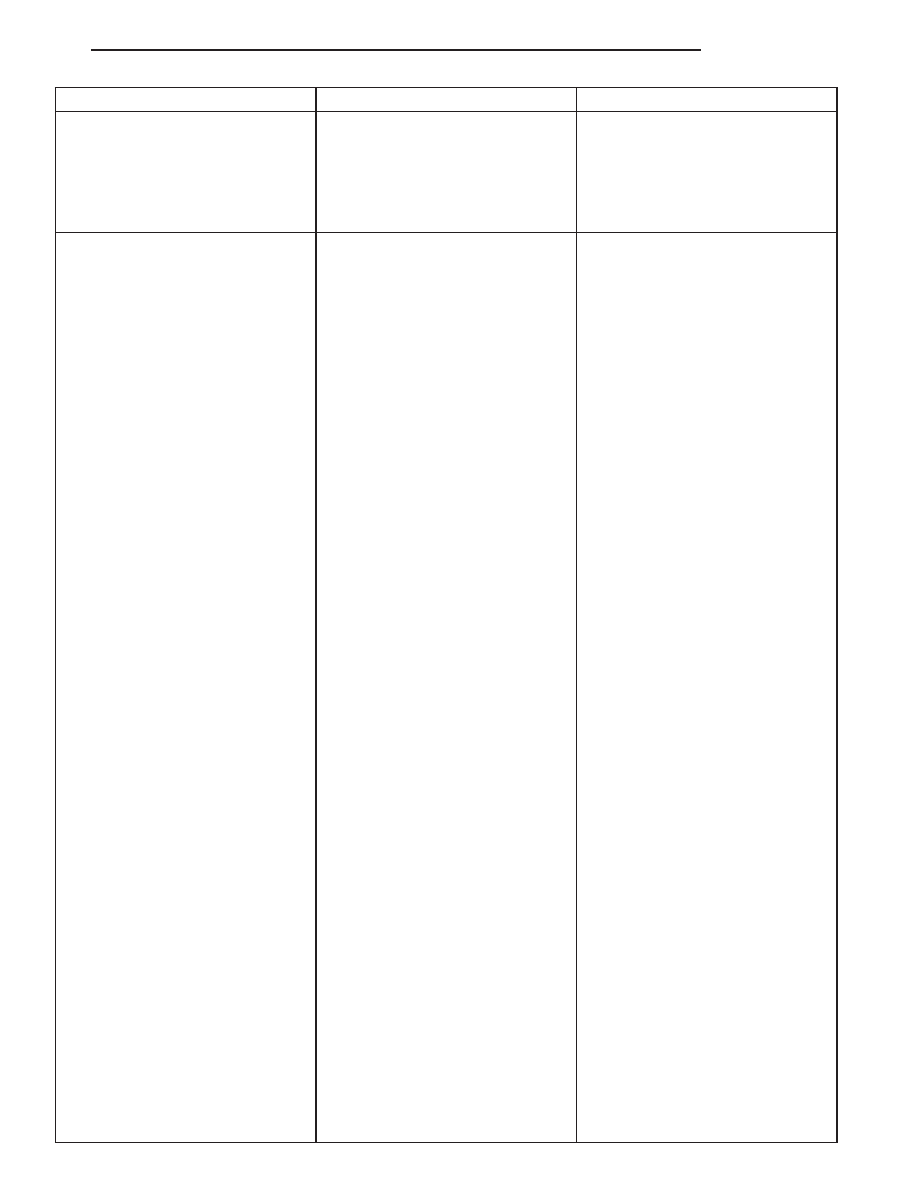Dodge Caliber. Manual - part 170

CONDITION
POSSIBLE CAUSE
CORRECTION
4. Coolant level low during cold
ambient temperature, accompanied
by poor heater performance.
4. Check coolant level in the coolant
recovery/reserve container and the
radiator. Inspect the system for
leaks. Repair as necessary. Refer to
WARNINGS in this section before
removing pressure cap.
TEMPERATURE GAUGE READS
HIGH OR ENGINE COOLANT
WARNING LAMP ILLUMINATES.
COOLANT MAY OR MAY NOT BE
LOST FROM SYSTEM.
1. Trailer being towed, a steep hill
being climbed, vehicle being
operated in slow moving traffic, or
engine idling during high ambient
(outside) temperatures with air
conditioning on. High altitudes could
also cause these conditions.
1. This may be a temporary
condition and repair is not
necessary. Turn off the air
conditioning and drive the vehicle
without any of the previous
conditions. Observe the temperature
gauge. The gauge should return to
the normal range. If the gauge does
not return to the normal range,
determine the cause of the
overheating and repair. Refer to
POSSIBLE CAUSES in this section.
2. Inoperative temperature gauge.
2. Check gauge operation (Refer to
8 - ELECTRICAL/INSTRUMENT
CLUSTER - DIAGNOSIS AND
TESTING).
3. Is temperature warning lamp (if
equipped) illuminating
unnecessarily?
3. Check warning lamp operation
(Refer to 8 - ELECTRICAL/
INSTRUMENT CLUSTER -
DIAGNOSIS AND TESTING).
4. Coolant low in recovery/reserve
bottle and radiator?
4. Check for coolant leaks and
repair as necessary.
5. Pressure cap not installed tightly.
If cap is loose, boiling point of
coolant will be lowered. Also refer
to the following step 6.
5. Tighten cap.
6. Poor seals at pressure cap.
6. (a) Check condition of cap and
cap seals (Refer to 7 - COOLING/
ENGINE/RADIATOR PRESSURE
CAP - DIAGNOSIS AND TESTING).
Replace cap if necessary.
(b) Check condition of filler neck. If
neck is warped or damaged, replace
neck.
7. Coolant level low in radiator, but
not in coolant recovery/reserve
bottle. This indicates the radiator is
not drawing coolant from the
coolant recovery/reserve bottle as
the engine cools. As the engine
cools, a vacuum is formed inside
the cooling system. If the pressure
cap seals are defective, or the
cooling system has a leak, a
vacuum cannot be formed.
7. (a) Check condition of pressure
cap and cap seals. Replace cap if
necessary.
(b) Check condition of filler neck.
Replace if damaged.
(c) Check condition of hose from
filler neck to coolant container. It
should be tight at both ends without
any kinks or tears. Replace hose as
necessary.
(d) Check coolant recovery/reserve
bottle and hose for blockage. Repair
as necessary.
PM
COOLING
7 - 5